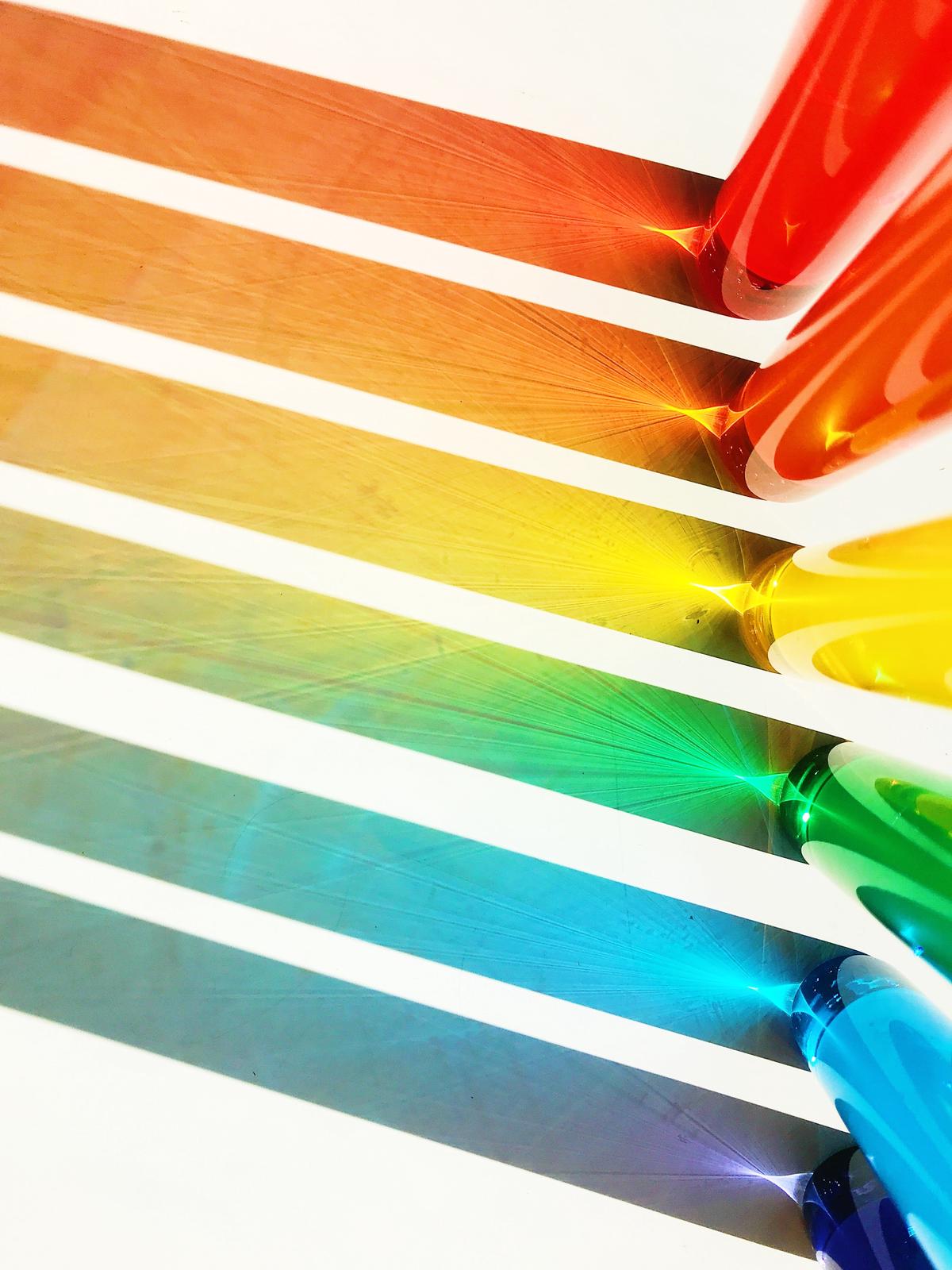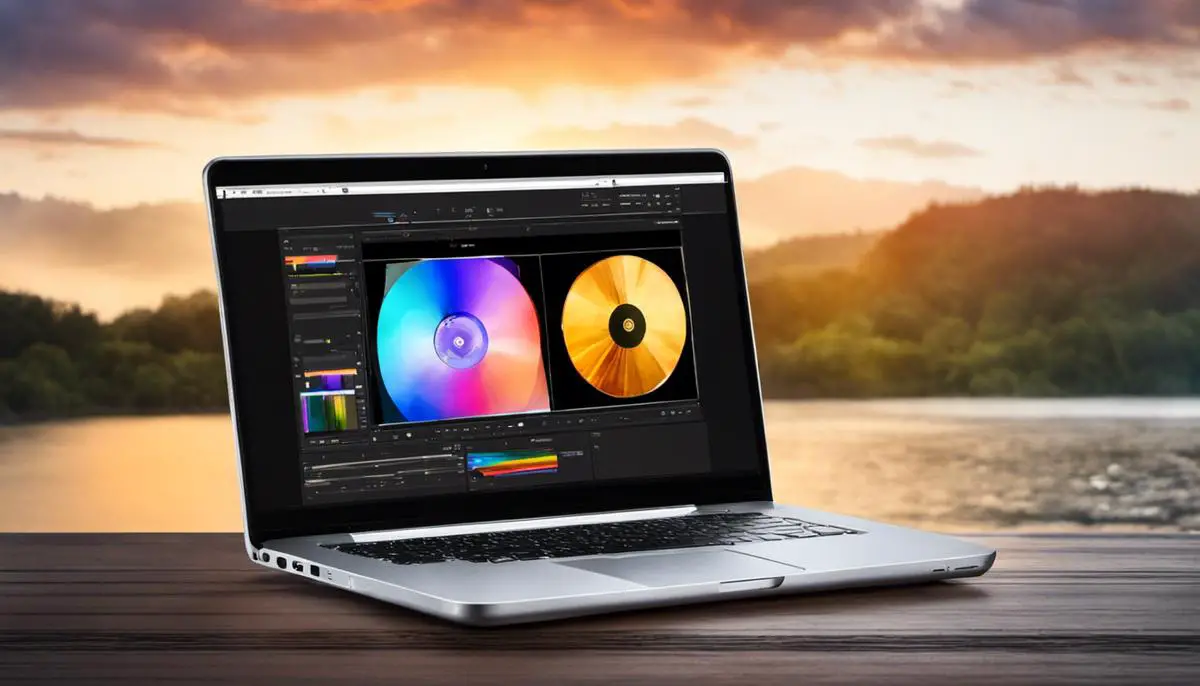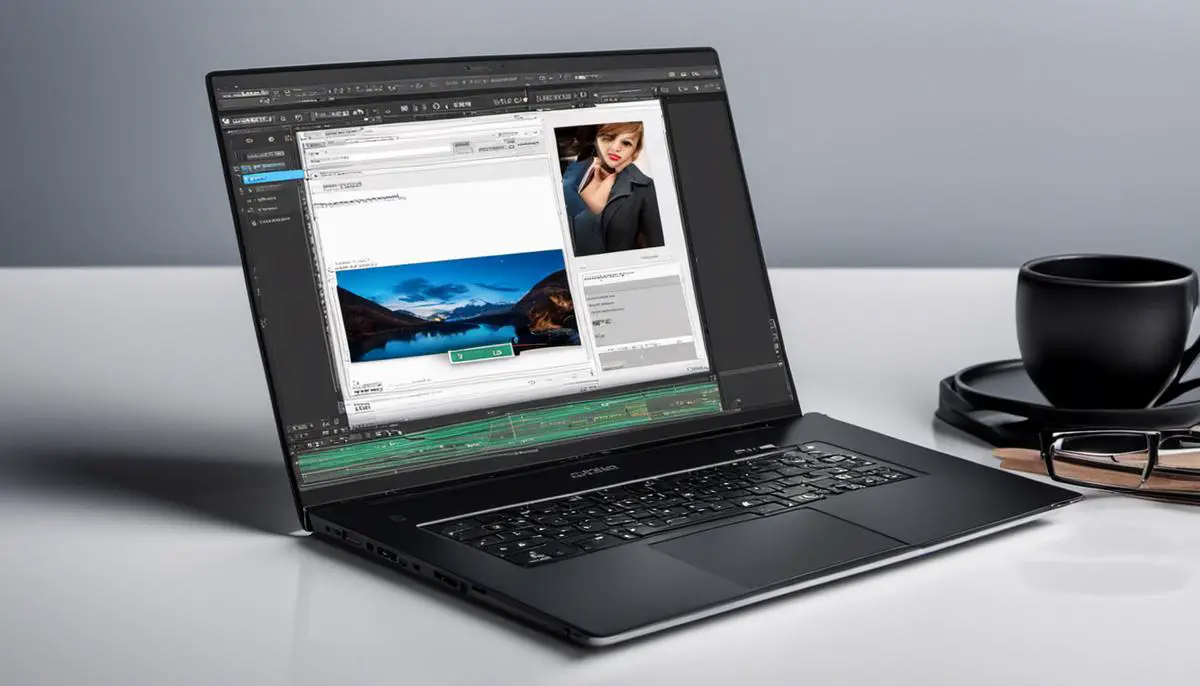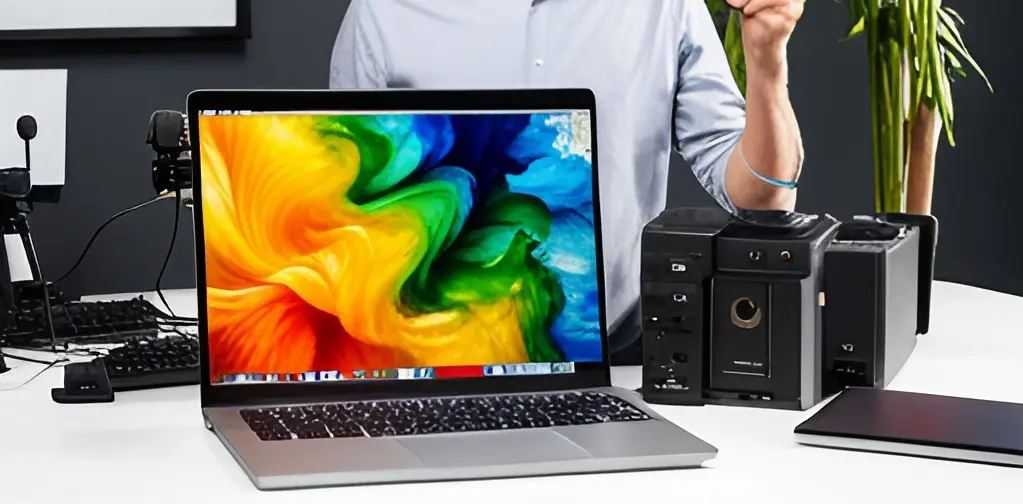In a world that’s more photographic than ever before, the art and science of photo editing have transcended its initial barriers, and now, everybody from seasoned professionals to enthusiastic hobbyists wants to master this skill.
The key element to this is not just the software you use, but the hardware you carry. Understanding color science, the role of the monitor in photo editing, and what hardware specification means in the context of photo editing can transform your pictures from good to great.
This article aims to equip you with the know-how to make that happen, accompanied by a rundown of some of the best laptops to help you put theory into practice.
Grasping Color Science in a Nutshell
The ABCs of Color Science in Photo Editing
Hold your horses; color science isn’t just for lab rats. It’s a cocktail of physics, chemistry, and biology, all mixed up. Imagine color as a light show, where each wavelength plays a different band member – red, orange, yellow, green, blue, indigo, and violet. These are the rockstars your eyeballs listen to; each wavelength is a unique color in the concert of light.
When it comes to photo editing, color science is the secret sauce. Sure, fiddling with hues in your editing software feels like magic, but without a solid grasp of color science, you’re just shooting in the dark. It’s like trying to play Beethoven on a kazoo.
Let’s get into the nitty-gritty.
Color science deals with some seriously trippy stuff. Ever noticed how a color can look different under different lights? That’s ‘color constancy’ hogging the limelight. Or how a color can change its vibe based on the colors it’s chilling with? Meet ‘color context,’ the social butterfly of the color world. These are game changers for photography and photo editing, just like discovering fire was for the caveman.
So buckle up, color science in photo editing isn’t just about the colors you see, it’s about how and why you see them. Get ready to transform your good photos into “OMG, did you really click that?” photos.
Key Points:
In photo editing, understanding color science is crucial. Colors in photos can be altered using editing software, but without a deep understanding of how colors work and how they are perceived, it’s challenging to make changes that achieve the desired effect.
Complexities within color science often relate to how colors interact with each other and their environment.
For example, under different types of light, a color might appear different. This effect is known as color constancy. Similarly, a color might appear different depending on the colors around it – an effect known as color context. Both these phenomena have significant implications for photography and photo editing.
The Journey of Color in Digital Space
Colors in digital photography go through several transformations from the scene being captured to the final image displayed on a screen. This journey begins with the light that enters the camera sensor.
This light is then filtered into red, green, and blue channels – the primary colors of light – to create the digital image.
This same image, when displayed on a laptop screen or other display device, gets reproduced using a backlight shining through red, green, and blue subpixels. How these subpixels are proportionately energized determines the final color you perceive on your screen.
Choosing the Perfect Laptop for Photo Editing: A Focus on Color Accuracy
In photo editing, color precision is vital. Hence, owning a laptop that can reproduce colors with impeccable accuracy is important.
The degree of a laptop’s color accuracy is influenced by various factors like the type of screen, resolution, brightness, color gamut, and color calibration.
- Typically, laptops equipped with IPS (In-Plane Switching) screens are a top choice when editing photos.
This is due to their superior color reproduction abilities and wide-ranging viewing angles. Equally important is a high-resolution screen which allows for a clearer and more detailed view of your photos, thus making editing more precise.
The range of colors your laptop can exhibit, known as the color gamut, is another key component. More colors can be displayed by a laptop with an extensive color gamut, resulting in more vibrant and accurate images.
Lastly, color calibration is crucial to maintaining the integrity of your original colors on your laptop screen.
Specific software and hardware may be needed to adjust settings like brightness, contrast, and color balance.
Many professional photo editors invest in a device called a colorimeter for precise calibration of their laptop screens.
In wrapping up, a good understanding of color science enhances your photo editing skills. It empowers you to grasp why colors are displayed as they are, guiding you to make better editing decisions.
Selecting a laptop that values color accuracy helps you ensure your edited photos are as close to the original scene as possible.

Photo by moonshadowpress on Unsplash
The Role of Monitor in Photo Editing
The Undeniable Importance of a Top-Notch Monitor in Photo Editing
Don’t underestimate the power of a superior monitor in your photo editing journey. You see, your monitor is essentially the stage on which your images perform.
A mediocre monitor is like a shoddy stage, washing out the hues, blurring the contrasts, and dulling the entire performance.
On the flip side, a high-quality monitor preserves the rich details, tones, and nuances, letting your images shine in their full glory.
Therefore, if you’re serious about photo editing, investing in a top-tier monitor is not just a choice, it’s an imperative.
Types of Laptop Screens
There are three common types of laptop screens – IPS (In-Plane Switching), OLED (Organic Light Emitting Diodes), and Retina (a brand-specific term used by Apple).
- IPS screens offer a wide viewing angle and excellent color accuracy, making them ideal for photo editing. They are often considered the industry standard due to their accurate and consistent color reproduction.
- OLED screens, on the other hand, offer vibrant colors and deep blacks. They have a high contrast ratio which provides stunning image quality. However, their color accuracy may not be as reliable as IPS screens, making them less suitable for professional photo editing.
- Apple’s Retina displays offer a higher pixel density, providing crisp and sharp image quality. They have a wide color gamut and are also great at color accuracy, making them another excellent option for photo editing.
Resolution, Screen Size, and Color Accuracy
Resolution is another important factor in photo editing. Higher-resolution monitors offer greater detail, allowing you to see and edit your photos more accurately.
- A resolution of at least 1080p is recommended for photo editing.
Screen size plays a role in photo editing as well. Larger screens allow you to see more of your project at once and also see details easier, which can improve your editing efficiency.
Color accuracy is crucial in the realm of photo editing. To ensure color accuracy, monitors should be able to produce the full spectrum of colors that exist within the color spaces that photographers use.
Understanding Color Gamut and Color Spaces
In the context of photo editing, color gamut refers to the complete range of colors that a device (like a monitor) is capable of displaying. A wider color gamut means a device can display more colors, offering greater color accuracy.
Color spaces like sRGB, Adobe RGB, and ProPhoto RGB are essentially specific ranges of colors. sRGB is the most commonly used color space and is the standard for most monitors, printers, and the internet.
Adobe RGB has a wider color gamut than sRGB and is used in professional-grade monitors.
It can display more intense and saturated colors.
ProPhoto RGB has an even wider color gamut and includes all colors visible to the human eye and beyond.
For photo editing, it’s crucial that your laptop’s monitor can accurately display the color space that your photos are in.
Otherwise, the colors you see on your screen may not accurately reflect the colors in your final product.
- A photo editing laptop should have at least 99% sRGB and 75% Adobe RGB color space coverage.
In the realm of photo editing, choosing your laptop is not just about its internal specifications but also the quality of its screen display. After all, to accurately edit your photos, you need to view each pixel in its most authentic form.

A Step-by-Step Guide to Calibrating Your Laptop Screen for Photo Editing
- Set the Right Resolution: The first step in calibrating your laptop screen is to ensure it is set to its native resolution. This will provide the sharpest image, which is crucial for photo editing. You can do this in the display settings on your laptop.
- Adjust Brightness and Contrast: The next step is to adjust the brightness and contrast of your screen. A properly calibrated screen should not be too bright or too dark. This is subjective and can depend on your working environment.
- Color Calibration: Now, let’s move to color calibration. There are several tools available for this, but a popular choice among professionals is the X-Rite i1Display Pro. It’s a bit of an investment, but it’s worth it if you’re serious about photo editing.
- Use Color Management Tools: Make sure you’re using color-managed software. This means software that can handle color profiles, like Adobe Photoshop or Lightroom.
- Test Your Calibration: Finally, test your calibration by viewing a variety of photos. Look at the color, contrast, and brightness to ensure it’s to your satisfaction.
Remember, calibration isn’t a one-time process. You should recalibrate your screen every few weeks to ensure color accuracy.
Also read: Essential Graphics Card Guide for Graphic Designers
Hardware Specifications for Photo Editing
Why Laptop Specifications Matter in Photo Editing
When immersed in the world of photo editing, considering your laptop’s performance is crucial. The efficiency and quality of your photo editing outcomes rely significantly on your laptop’s specs, including the speed of the processor, the amount of RAM, storage capacity, and the kind of graphics card your laptop houses.
Speed of the Processor
The processor or CPU (Central Processing Unit) is essentially the brain of your laptop. This is where all calculations take place, which means a faster processor will enable you to edit photos more quickly.
When running photo editing software, like Adobe Photoshop or Lightroom, a multi-core processor is important.
Multi-core processors enable your laptop to handle multiple tasks at the same time, which is essential when photo editing, as you’ll likely be using multiple tools and features at once.
RAM (Random Access Memory)
RAM is another significant specification to consider when looking for the best laptop for photo editing.
Higher amounts of RAM allow your laptop to store more information that can be accessed instantly. This is vital in photo editing where you have to work with large files and multiple layers. When photo editing, your laptop will need to store and retrieve information quickly, and the more RAM you have, the more information can be accessed at once, increasing your machine’s speed and performance.
Storage Space
Storage is another key factor to consider, especially if you plan on working with high-resolution images or RAW photo files which can take up a considerable amount of space. Solid State Drives (SSD) are faster than traditional Hard Disk Drives (HDD), and they are less prone to failure, making them a better choice for photo editing.
Graphics Card
A good graphics card can significantly speed up photo editing tasks. Software like Adobe Photoshop or Lightroom can leverage the power of a graphics card to speed up tasks, especially those using 3D or animated effects.
- A graphic card with a high amount of VRAM (Video RAM) is beneficial as it has more capacity to store graphical data, which can greatly improve performance.
Striking a balance amongst the individual components of a laptop is key when it comes to enhancing device performance. In the case of photo editing, this holds even more relevance.
A laptop may be powered by an impressively robust processor, but if it lacks the necessary RAM or storage capacity, it could become a stumbling block in your photo-editing journey.
Therefore, an ideal laptop for this purpose would be one that pairs a mighty processor with adequate RAM, sizeable storage, and a high-performance graphics card.
| Key Takeaways | Description |
|---|---|
| Color Spaces | sRGB is the most commonly used color space. For professional-grade monitors Adobe RGB and ProPhoto RGB are preferred. Your laptop should have at least 99% sRGB and 75% Adobe RGB color space coverage. |
| Screen Calibration Steps | 1. Set the native resolution 2. Adjust Brightness and Contrast 3. Color Calibration (e.g., using X-Rite i1Display Pro) 4. Use color-managed software 5. Test your calibration. Repeat every few weeks. |
| Processor Speed | A faster, preferably multi-core, processor enables quicker photo editing. The CPU is the laptop’s brain. |
| RAM (Random Access Memory) | Higher RAM means more information can be accessed instantly, allowing for speedy work with large files and multiple layers. |
| Storage Space | Solid State Drives (SSD) are faster and less prone to failure, ideal for working with high-res images or RAW photo files. |
| Graphics Card | A high VRAM graphics card can significantly speed up photo editing tasks, especially those using 3D or animated effects. |
| Balanced Performance | A laptop with a robust processor, adequate RAM, sizeable storage, and a high-performance graphics card is best suited for photo editing. |

Best Laptops for Photo Editing
The Anatomy of an Ideal Laptop for Photo-editing
The times demand that your proficiency in creating visually stunning photo edits must be paralleled with a laptop that stays apace with modern-day photo editing needs. When scouring the market for the best laptops for photo editing, there are several features to consider.
High-resolution displays hold the highest importance for color-accurate photo editing.
Though a display resolution of 1920 x 1080 (FHD) is recommended at least, you will find 4K resolution (3840 x 2160) a greater ally, providing superior detail and color accuracy.
- It’s worth mentioning that many photo editors prefer matte, non-reflective screens for reducing glare and achieving more precise color representation.
Beyond the display, the color gamut of a laptop is a vital consideration.
- Photo editing professionals often choose Adobe RGB or DCI-P3 color spaces over the standard sRGB that most laptops use.
These spaces present a broader color spectrum, enabling smoother gradations and more accurate colors for photo editing.
A laptop’s speed and overall performance also warrant major attention. Ideally, your laptop should be empowered with a robust central processing unit (CPU) to run software with maximum efficiency.
Also, it should be equipped with an ample amount of memory (RAM) to prevent any lags during the processing operation. In essence, these elements together would ensure an optimal photo editing experience.
Top Laptops for Photo Editing
Several laptops stand out for photo editing due to their excellent display quality and high-performance specifications.
- The Apple MacBook Pro is a popular choice for many professional photographers due to its impressive Retina display.
The latest models boast 500 nits of brightness, a wide P3 color gamut, and ultra-high resolutions. Moreover, the latest M1 Pro and M1 Max chips give the MacBook Pro a significant performance boost, making photo editing even smoother and faster.
- Microsoft’s Surface Pro line is also highly rated by photo editors.
The Surface Pro 7, with its PixelSense display, vivid colors, and high contrast ratios, offers a display quality that’s on par with the MacBook Pro. It’s also incredibly portable and flexible, offering a tablet mode that many photographers find useful for editing on the go.
- If you’re searching for a Windows laptop with plenty of power and an excellent display, the Dell XPS 15 is a great option.
It has a 4K touch display that covers 100% of the Adobe RGB color gamut and provides a high contrast ratio. Coupled with powerful hardware specifications, it delivers significantly when processing large files in photo editing software.
- The ASUS ZenBook Pro Duo offers a unique dual-screen setup.
This provides a full-width 4K secondary touchscreen that works seamlessly with the primary 15.6-inch 4K UHD OLED touchscreen, offering unprecedented levels of control within photo editing applications. With its color-calibrated display and robust hardware, the Pro Duo is an innovative option for photo editors.
When selecting a photo-editing laptop, it’s important to consider individual needs and preferences. For ultimate color accuracy and professional use, a laptop with an Adobe RGB or DCI-P3 display and high resolution may be the best option.
For hobbyists or beginners, a laptop with a good-quality sRGB display and sufficient speed and storage might suffice. Whichever you choose, remember that investing in a quality laptop is necessary for smooth, seamless, and accurate photo editing.
| Laptop Model | Display | Color Gamut | Key Features |
|---|---|---|---|
| Apple MacBook Pro | Retina Display | P3 Wide | High brightness, M1 Pro and M1 Max chips for greater performance |
| Microsoft Surface Pro 7 | PixelSense Display | sRGB | Vivid colors, high contrast ratios, portable with tablet mode |
| Dell XPS 15 | 4K Touch Display | 100% Adobe RGB | High contrast ratio, powerful hardware specs |
| ASUS ZenBook Pro Duo | Dual 4K UHD OLED Touchscreen | Adobe RGB | Dual screen setup, color-calibrated display, robust hardware |

Photo by glenncarstenspeters on Unsplash
Having explored the distinct yet interconnected realms of color science, monitor’s role, hardware specifications, and the best laptops available for photo editing, you’re no longer a mere enthusiast; you’re equipped with the knowledge to make informed decisions that will impact the quality of your work.
The right understanding of color, a laptop with a high-quality screen, and apt specifications can significantly enhance the quality of your photo editing. Driven by your passion and creativity, backed by your knowledge and the perfect gear, the world of photo editing awaits to be explored.


